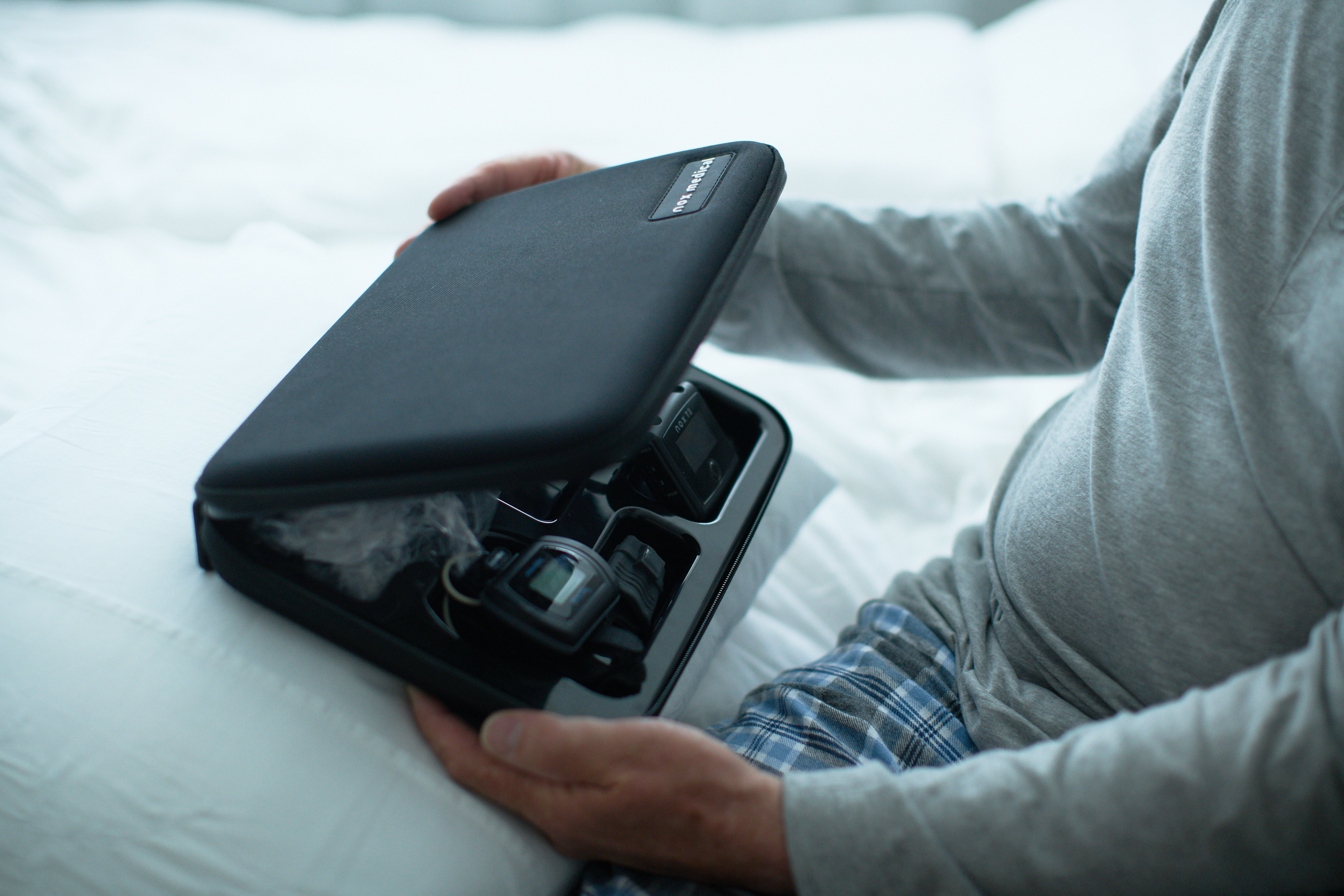Technological advancements in home sleep testing (HST) may help solve the issues contributing to the underdiagnosis of sleep apnea, reports Sleep Review Magazine. A recent article describes how newer technologies that measure sleep time, offer multi-night recording capabilities, and have patient-centric and wireless design have the potential to accurately diagnose the severity of sleep apnea. In the article, Sveinbjörn Höskuldsson, Chief Technology Officer at Nox Medical, shares his insight on the importance of patient comfort and ease of use for sleep professionals in a home sleep study equipment:
“If you want to get an accurate measure of normal sleep, you would like the patient to sleep in a normal environment and that is in their own bed”. Höskuldsson says.
He goes on and explains how Nox Medical’s sleep systems, including the Nox T3s home sleep testing system, are designed to balance simplicity and clinical accuracy:
“It needs to be more complete, but less complex.” In other words, simplicity is essential to making the test easy for the user, but for the results to be meaningful, the output needs to contain a comprehensive, reliable set of data that the physician can use to make an accurate diagnosis.”
“We need to make some compromises to be able to do [sleep studies] at home, compared with the elegant studies we can do in hospitals. But we can’t drop the quality of the studies because we don’t want to misdiagnose people and we don’t want to deploy technology that does not work for the patient population that we’re trying to cover,” Höskuldsson says. “We really need to get to the point where we can deploy technology that is accessible to everyone and still provides high-quality results.”
Furthermore, Höskuldsson explains Nox Medical’s newest innovation, the Nox BodySleep analysis*, a new way to estimate sleep time by analyzing breathing parameters. The Nox BodySleep does not require traditional EEG, EOG, and EMG signals typically used in a PSG study to determine changes during sleep stages. The Nox BodySleep analysis is compatible with the Nox T3s home sleep testing system:
“BodySleep”—cleared for use in Europe but not yet in the United States–which uses an artificial intelligence algorithm to analyze respiratory and actigraphy signals. Höskuldsson says, “The home testing systems are proven to be quite accurate and they’re getting more accurate because artificial intelligence can be used to increase the processing of the data being collected, thus getting a better estimation of the sleep time.”
Read the full story in Sleep Review Magazine.
*Nox BodySleep is not available in the United States.
Topic: Industry News





